Photography courtesy of Lowell Washburn, all rights reserved.
The redhead is one of my favorite ducks. I know. I say that about a lot of ducks. But when it comes to redheads; I really mean it.
All things considered, there’s really nothing not to like about these incredible heavy bodied, broad breasted, monster-webbed, red headed deep divers. They’re big. They’re beautiful. And they readily come to decoys. Unique in many ways, redhead drakes even emit a very unducklike, meowing call that is an exact replica of the sound made by your neighbor’s pet cat. Redheads feed mostly on mild flavored aquatic plants; whether grilled, baked, or pan seared; these ducks taste great. So much so, that during the market gunning era of the late 1800’s high ticket, East Coast restaurants sometimes substituted roast redheads for canvasback. Unwitting patrons never knew the difference, or so the story goes.
Most redheads spend the winter along the Gulf Coastal regions of Louisiana, Texas, and Mexico. Most breed on the prairie wetlands of southern Canada. That’s where they’re headed now. With the spring snow melt well underway and ponds beginning to open, redheads are making their appearance in Iowa’s northern tiers of counties. Although redheads rarely nest here, Iowa wetlands do provide critical food and rest stops as mated pairs head north.
With clear skies and a stiff breeze, the morning of March 29 presented a perfect day for some serious redhead watching. Pulling on my waders and grabbing a bag of decoys and a chunk of blind grass, I headed for one of my favorite wetlands – a deep, sago-infested pond where redhead numbers had been building for the past two days.
It’s been a late spring in northern Iowa, and a lingering layer of snow cover extended all the way to water’s edge. This was OK though. The snow would greatly aid in becoming invisible to incoming ducks. After tossing out the decoys, I slipped a white hooded jacket over my insulated coat. Sitting down with my feet to the water, I threw the piece of blind grass over my lap and let the white hoodie do the rest. It was a short wait as birds began coming off nearby “Big Water” to feed on the pond. Arriving over the pond, the redheads quickly spotted my decoys. In spite of the fact that I was sitting right out in plain sight, the ducks set their wings and piled in. It never fails. Whether I’m trying to hide from deer, turkeys, or waterfowl; nothing beats the combination of snow cover and a white camo coat.
I don’t know how many redheads came into that sago pond during the first two hours of daylight, but it was a lot. As the morning continued, the birds were joined by a growing number of scaup and ring-necks. It was an incredible show.

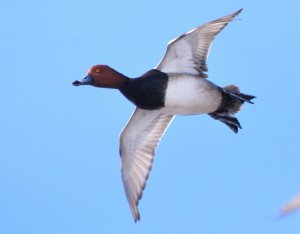
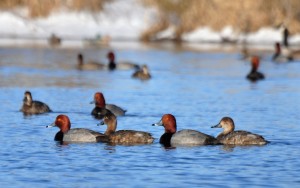

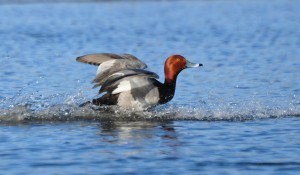
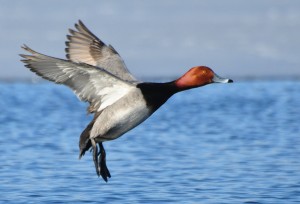

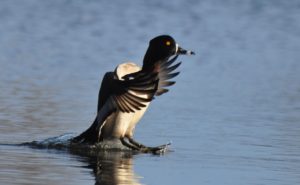
 Tom Cope
Tom Cope Sue Wilkinson
Sue Wilkinson Susan Judkins Josten
Susan Judkins Josten Rudi Roeslein
Rudi Roeslein Elyssa McFarland
Elyssa McFarland Mark Langgin
Mark Langgin Adam Janke
Adam Janke Joe Henry
Joe Henry Kristin Ashenbrenner
Kristin Ashenbrenner Joe Wilkinson
Joe Wilkinson Dr. Tammy Mildenstein
Dr. Tammy Mildenstein Sean McMahon
Sean McMahon